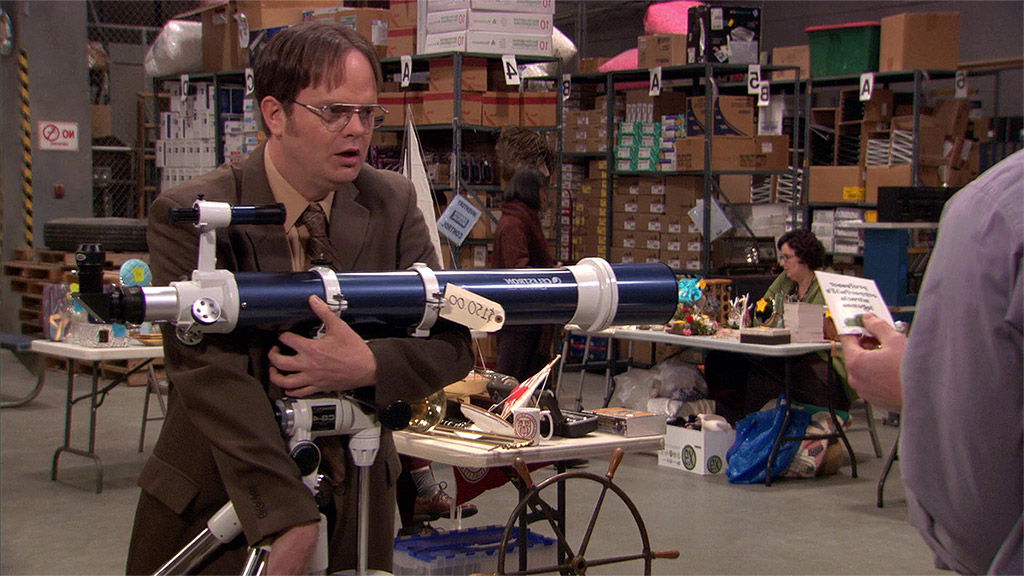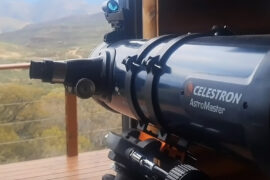Using your telescope to watch the wonders of the universe is a happy and fun experience. But what comes next after every stargazing session is the boring part. You need to pick up your toys, clean up, and store everything until the next time.
This process can be a bit of a hassle if you don’t have a plan that you can repeat easily every night. Then there’s the stress of worrying about whether or not the storage conditions are optimal and wondering if something bad is going to happen to your expensive piece of equipment.
This is why I’ve created this guide to help you build a proper storage routine that is fast and will keep your device in good shape and safe conditions for many years.
Even if you use it regularly, a telescope will spend a lot more time in storage than in use. This means it is important for the place where it will spend most of the time to have the right conditions.
How to store a telescope
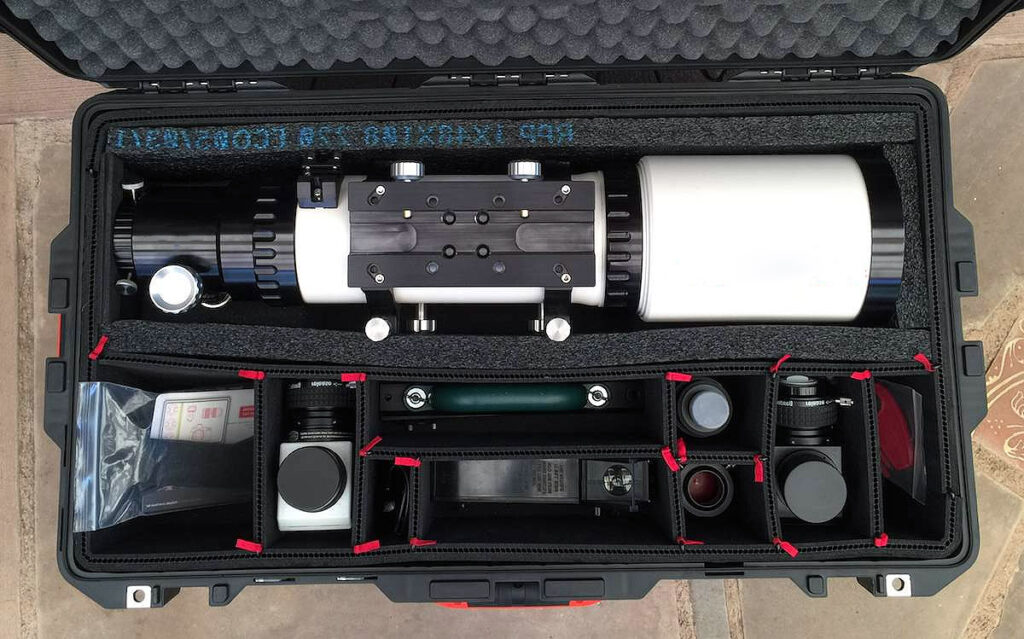
To develop a consistent, safe method of storage, you will need to answer four basic questions.
- Where are you going to put it? – Your telescope(s) need a consistent, exclusive spot where you are always going to put them while they are not in use. Are you going to use the garage because it is close to your observing spot? or will it go in the closet?
- Are you going to leave it setup, or are you going to dissassemble it? – Both options are valid and each has its own advantages and disadvantages. Leaving it assembled is more convenient, but taking it apart is safer.
- How are you going to transport it back and forth? – If it’s a big telescope, weight should be a consideration. Is the path between the storage space and the observing spot clear? Will you have to use any stairs? Are they close to each other?
- Where will you place the accessories? – Your eyepieces, diagonals, Barlows and other accessories will also need a home. They can also be expensive pieces of equipment that should be treated with the same level of care so they can work in optimal conditions for a long time.
Let’s take a look at each of these points individually. Let’s start by choosing the right spot in the house.
Where to store your telescope
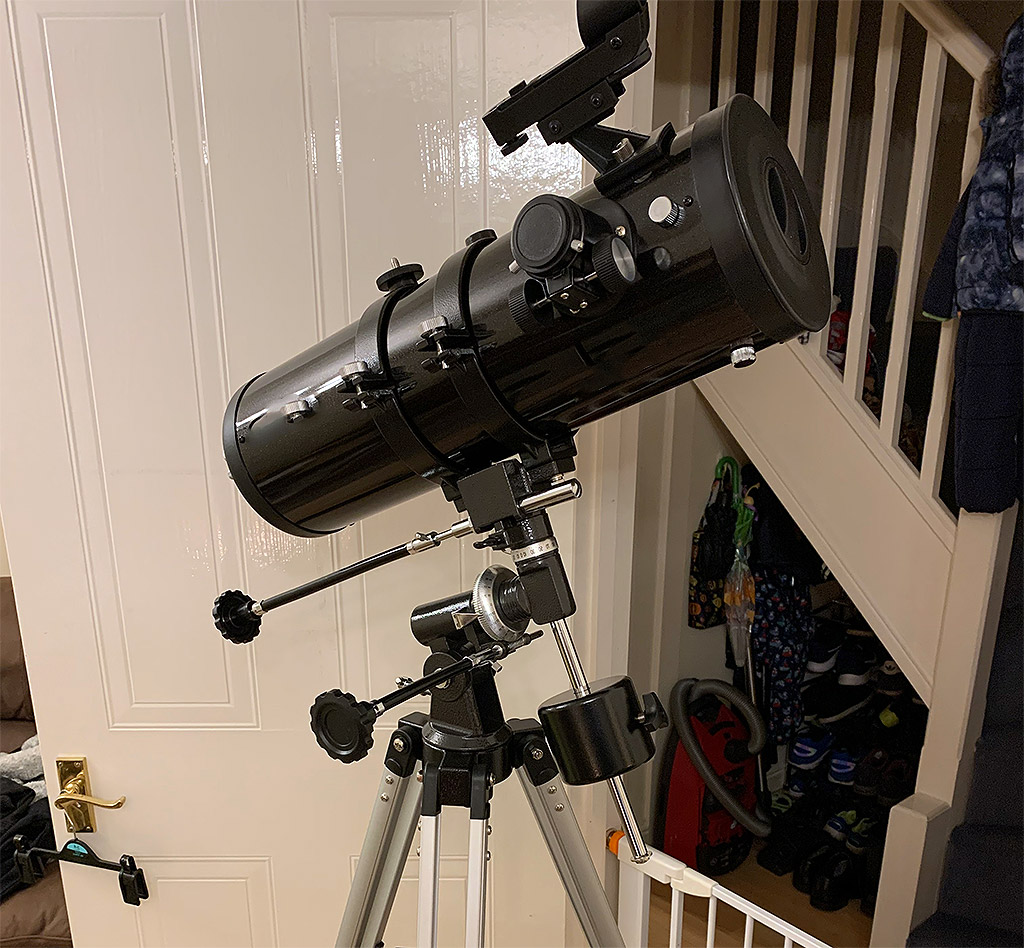
There are a few things to consider when selecting the best spot to put your telescope. Every house has a different set of conditions so the best place is going to depend on your particular situation.
The most important factors to consider are:
- Humidity – Moist, damp, and humid places in general should be avoided. Humidity can cause condensation or dew to form in the telescope’s lenses, leaving spots if it’s not properly dryed. It can also cause rust in the metallic parts or cause mold to appear. To fix this some people go as far as setting up a dehumidifier in the room that will be used for storage. That might be overkill in most case, but do try to choose a dry spot.
- Ease of access – It seems like a minor thing, but trust me, I’ve seen a few telescopes end up in the trash because the owner was constantly carrying them up and down the basement’s stairs and dropped them. Choosing a room with easy access is important, especially if you have a big telescope. The rooms in the ground floor should be the first options. If you live in an apartment and you just have no choice but to constantly carry it, then consider getting a carrying case and dissasembling it first, we’ll talk more about that below.
- Avoid direct sunlight – In the movies you will see people leaving their telescope right by the window as decoration. Bad idea. Heat buildup can make the mirror’s glue to weaken, messing up their alignment. It will also increase the time the telescope needs to acclimate to ambient temperature when you bring it outside, making your viewing sessions less fun. If you want to use the telescope as decoration, get a cheap exclusively for that purpose, but your observing one should remain away from sunlight as much as possible.
- Smoke – Smoke can create deposits over time on the lenses or leave a film that messes up the colors. This not only applies to cigarrette smoke, but also to vehicle fumes, grills, etc. This doesn’t automatically discard a garage, but if your car is pushing smoke into the room on a daily basis even for a few minutes, over time it can build up.
- Dust – While dust can be easily cleaned, you want to reduce how often you need to clean your telescope lens to reduce the chance of scratching it or leaving a spot. The lenses should alway have their dust caps on when not in use.
- Room temperature – This isn’t really that important unless the room is extremely hot, but if you are really looking for the most optimal storage conditions, ideally you want the room temperature to be as close to ambient temperature as possible. This will reduce the acclimation time for your telescope and will let you enjoy your viewing session a bit more.
- Ventilation – This goes hand in hand with some of the the previous points. Good ventilation will keep the room closer to ambient temperature and help avoid humidity and heat buildup.
With this in mind, you’ll probably have a better idea of which room in your house will offer the best environment to store your telescope.
If you can afford the space for it, the living room, the dining room, or a guest bedroom tend to be the better options.
The second-best options tend to be a shed, a home gym, or the garage.
Leaving it outside isn’t really recommended, but if you really have to go that way, make sure it’s a spot with plenty of shade and fully covered.
Finally, the places that are not generally recommended unless they are the last remaining option are attics, basements, and outdoors.
Leaving the telescope set-up vs dissasembling it
Once you have chosen the spot where the telescope will reside, the next decision is to figure out if you are going to leave it set up or if you are going to disassemble it after using it.
Can you leave a telescope setup for future use?
Leaving a telescope fully assembled in storage is safe as long as you have the space for it and follow a few simple rules. Putting the dust caps and using a telescope cover will be absolutely necessary to keep it protected.
Most people choose to leave their telescopes assembled as it just makes it easier to use the next time they want to stargaze. Just make sure it’s in a good spot that takes into account the considerations in the previous section and to keep it covered and with the dust caps on.
If you are going to leave the telescope assembled, it’s worth investing in a water-resistant, thermally stable telescope cover that will keep it cool and free of dust and accidental water sources.
But if you don’t have the space for it or if you don’t want to run the risk of your kids breaking it because they were running around the house, disassembling it is also fine. You can store it in its original box although that probably won’t last long so you will want to eventually invest in a hard case or a bag. Both of these also serve the double purpose of functioning as carrying bags if you ever want to go camping.
In fact, disassembling it is a much safer choice for mounted telescopes, but it’s very time-consuming and will make it less likely for you to use it as you will dread the hassle of setting it up every time you want to stargaze.
You can’t really go wrong with either choice, it’s just a matter of personal preference and weighing the pros and cons for each.
One important thing to note is that if the difference in temperature between outdoors and the room where you’ll store it is considerable, you must let the telescope dry before covering it or putting it on the case. This is because the change in temperature might cause some condensation on the lenses that might leave a spot if not dried properly.
There’s no need to clean or wipe it, just let it dry naturally.
Here are the pros and cons of cases vs covers to help you choose.
Telescope Covers
| Pros | Cons |
|---|---|
| Easy to use. Just cover the telescope, wrap the bottom and you are done | The telescope is more exposed |
| Faster setup | Must keep accessories separately |
| Faster storage | Requires more space |
| Inexpensive | Looks a bit ugly with the cover |
One handy tip if you decide to go for a cover is to leave the tube pointing upward. This puts less pressure on the mount’s connecting point so it doesn’t lose support over time.
If you need help choosing a telescope cover, here’s a whole article with recommendations. You can also make your own DIY cover if you have some sewing skills and want to save some money.
Telescope cases / Telescope bags
Cases and bags serve the same purpose and offer the same functionality. The only difference is that cases are obviously harder so they protect the telescope a bit more. On the other hand, they are also more expensive and take up more space.
| Pros | Cons |
|---|---|
| Additional protection from dust, humidity, smoke, etc | It takes a lot of time for assembly/disassembly |
| Requires little space | Generally more expensive, especially hard cases |
| Easier to carry around | Harder to show off your telescope to friends |
| It can be put out of sight | Less time for stargazing |
The one thing to consider when using a case or bag is to make absolutely sure the telescope is fully dry. You don’t want to close a bag with humidity still inside.
How to move a telescope
If you have chosen to leave your telescope setup then you will need to figure out a way to transport it from your observing space to its storage spot. Some bigger telescopes start to get heavy so this task can be harder than it sounds. This is also why in the previous sections I recommended not to choose a room where you would need to go up or down any stairs.
If your telescope is a refractor that is on the smaller side, carrying it shouldn’t be much of a problem. Simply grab with one hand the top of the tripod leg farther away from you. put your other arm across the base of the larger side of the tube to support its weight and grab the connecting seat (the tripod’s “head” or the part where the telescope tube is connected). This technique is actually well demonstrated by Dwight in one episode of the Office. The image below will help you understand it better.
Once you get to larger and heavier telescopes like Newtonians or some larger refractors, the mount will include a counterweight. Secure the tripod’s head with one hand, and grab the counterweight with the other. Lift with your legs, and tilt the weight of the telescope towards you.
If you feel like the telescope is too heavy for you or the path to the storage space isn’t straight, it’s simply best to detach the tube and carry the tube and the tripod separately.
As for Dobsonians, you don’t need to worry about a tripod, but they can be really heavy when you get to the larger models or the homemade scopes. Some people like to use a small cart to move those around easily.
How to store telescope eyepieces
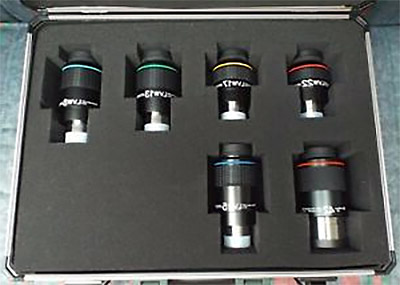
Now that you have a methodology to store your telescope, all that is left is figuring out what to do with your eyepieces and other accessories.
There are also multiple solutions for that. If you decided to purchase a bag or a hard case, it might already come with specific slots or pouches for this purpose.
If you don’t, then you have plenty of options. From using something as simple as a covered bucket to building your own case or buying one.
The considerations you need to take to store eyepieces are very similar to the ones listed above for telescopes. Make sure to keep dust, moisture, and direct sunlight away. Try and keep them separated from each other so they don’t get scratched or dented.
If you have bought expensive eyepieces and not just the ones that came with your telescope, it might be worth investing in a case to keep them individually padded and stored. Photography backpacks can also double as eyepiece bags because they have lots of individual slots for accessories.
Summary
- Select a place to store your telescope that is free of humidity, dust, smoke, direct sunlight and is easily accessible.
- It’s worth investing into a telescope cover or storage case.
- You can store your telescope assembled or not. It’s up to you.
- Accessories also need to be taken care of.


